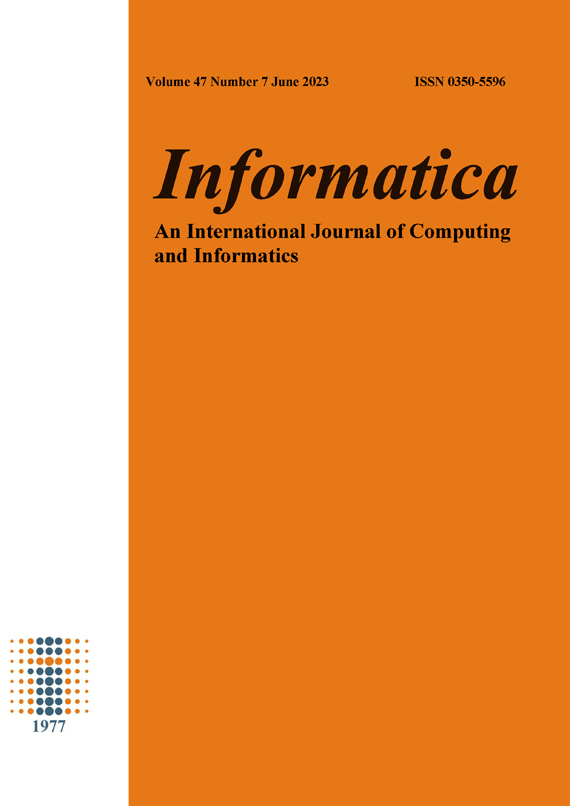Derivation of Optimized Threshold of Semantic Alignment Metrics for Intepretation of Interoperability and Reusability of Cross-enterprise Vehicle Service Interface Models
DOI:
https://doi.org/10.31449/inf.v47i7.4739Abstract
Over the past decade, cars have turned gradually into real cyber physical systems. The collaboration of services between the service-oriented, cross-enterprise vehicle application frameworks has increased to generate novel, smart and complicated vehicle services. Consequently, from an interoperability perspective, semantically mapping of vehicle service component’s interface ontological models emerged as a big research interest in automotive application domain that manipulates several cross-enterprise synergy knowledge applications frameworks. The ontological metamodeling lays the foundation for building semantic bridge and exploring semantic associations between service components’ interface models based on the domain knowledge for semantic interoperability. Also, several semantic quality metrics has been defined over time for the vehicle service interface ontological metamodels. The empirically evaluated values of these metrics can be used to assess progress in cross-enterprise interoperability between the service and the clients’ APIs ontological models in vehicle domain. Despite potential benefits of semantic alignment quality metrics, the effective use of these metrics for vehicle service interface ontologies have proven elusive. Yes, such metrics can be used successfully for quantification, but then they mostly fail to provide adequate annotations in subsequent decision-making in the direction of semantic interoperability and reusability. The effective use of ontology semantic alignment quality metrics is basically hindered in the absence of the meaningful thresholds. In fact, the absence of an effective and meaningful threshold for the semantic similarity measure between various vehicle service interface ontological metamodels, motivates this research work which not only proposes a design approach to an optimized threshold for the semantic similarity metrics but also applies this threshold on few defined semantic alignment quality metrics. This paper also uses a real-world vehicle domain industrial case study to illustrate the design approach.
References
T. L. Alves, C. Ypma and J. Visser, "Deriving metric thresholds from benchmark data," 2010 IEEE International Conference on Software Maintenance, Timisoara, Romania, 2010, pp. 1-10, doi: 10.1109/ICSM.2010.5609747.
S. De, J. Mottok, P. Brada (2023), “Evaluation of Semantic Interoperability of Automotive Service API Models Based on Metamodels Similarity Metrics Using a Semi-automated Approach”, In: Miraz, M.H., Southall, G., Ali, M., Ware, A. (eds) Emerging Technologies in Computing. iCETiC 2022. Lecture Notes of the Institute for Computer Sciences, Social Informatics and Telecommunications Engineering, vol 463. Springer, Cham, https://doi.org/10.1007/978-3-031-25161-0_2.
C. Bettembourg, C. Diot, O. Dameron, “Optimal Threshold Determination for Interpreting Semantic Similarity and Particularity: Application to the Comparison of Gene Sets and Metabolic Pathways Using GO and ChEBI”. PLOS ONE 10(7): e0133579, 2015, https://doi.org/10.1371/journal.pone.0133579.
V. A. French, “Establishing software metric thresholds,” International Workshop on Software Measurement (IWSM’99), 1999.
S. De, P. Brada, J. Mottok & M. Niklas, (2021), “The Empirical Evaluation of Semantic Alignment Quality Metrics for Vehicle Domain Component Frameworks Interface Ontologies”, In: The International FLAIRS Conference Proceedings, 34. https://doi.org/10.32473/flairs.v34i1.128512.
K. A. Ferreira, M. Bigonha, R. D. Bigonha, L.F. Mendes & H.C. Almeida (2012). Identifying thresholds for object-oriented software metrics, In: The Journal of Systems and Software, 85, 244-257.
M. Lanza, R. Marinescu (2006). Object-Oriented Metrics in Practice: Using Software Metrics to Characterize, Evaluate, and Improve the Design of Object-Oriented Systems. Springer-Verlag, Germany.
Baxter, G., Frean, M., Noble, J., Rickerby, M., Smith, H.,Visser, M., Melton, H., Tempero, E., 2006. Understanding the shape of java software. In: OOPSLA’06, OR, Portland, USA.
R. Wheeldon, & S. Counsell, (2003), “Power law distributions in class relationships”, In: Proceedings Third IEEE International Workshop on Source Code Analysis and Manipulation, pp. 45-54.
T. J. McCabe, "A Complexity Measure," in IEEE Transactions on Software Engineering, vol. SE-2, no. 4, pp. 308-320, Dec. 1976, doi: 10.1109/TSE.1976.233837.
R. Shatnawi, W. Li, J. Swain, and T. Newman, “Finding software metrics threshold values using ROC curves,” In: Journal of Software Maintenance and Evolution: Research and Practice, 2009.
S. Benlarbi, K. E. Emam, N. Goel, and S. Rai, “Thresholds for object-oriented measures,” in ISSRE ’00: Proc. of the 11th International Symposium on Software Reliability Engineering. IEEE, 2000, p. 24.
L. Yonglin, Z. Zhi, L. Qun, “An ontological metamodeling framework for semantic simulation model engineering”, Journal of Systems Engineering and Electronics, vol. 31, no. 3, pp. 527-538 (2020).
Downloads
Published
Issue
Section
License
I assign to Informatica, An International Journal of Computing and Informatics ("Journal") the copyright in the manuscript identified above and any additional material (figures, tables, illustrations, software or other information intended for publication) submitted as part of or as a supplement to the manuscript ("Paper") in all forms and media throughout the world, in all languages, for the full term of copyright, effective when and if the article is accepted for publication. This transfer includes the right to reproduce and/or to distribute the Paper to other journals or digital libraries in electronic and online forms and systems.
I understand that I retain the rights to use the pre-prints, off-prints, accepted manuscript and published journal Paper for personal use, scholarly purposes and internal institutional use.
In certain cases, I can ask for retaining the publishing rights of the Paper. The Journal can permit or deny the request for publishing rights, to which I fully agree.
I declare that the submitted Paper is original, has been written by the stated authors and has not been published elsewhere nor is currently being considered for publication by any other journal and will not be submitted for such review while under review by this Journal. The Paper contains no material that violates proprietary rights of any other person or entity. I have obtained written permission from copyright owners for any excerpts from copyrighted works that are included and have credited the sources in my article. I have informed the co-author(s) of the terms of this publishing agreement.
Copyright © Slovenian Society Informatika








